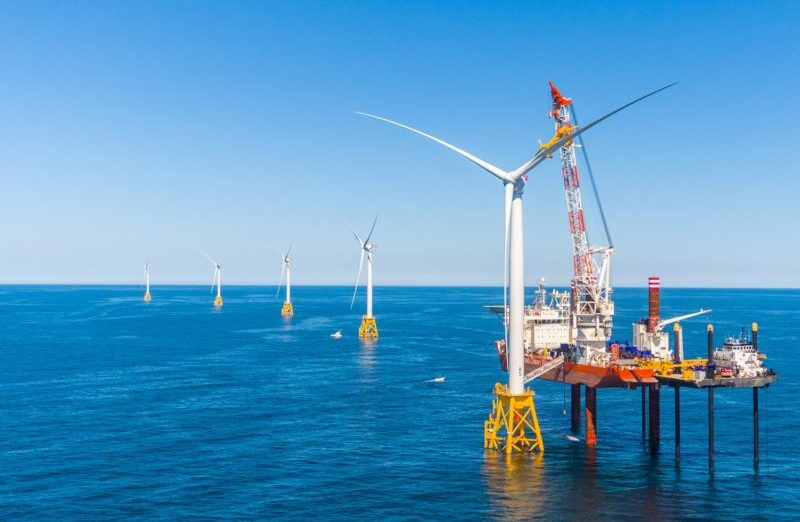The budding Atlantic offshore wind industry needs a skilled workforce in the Northeast and a consistent federal approach to permitting and regulation, experts told members of Congress Tuesday.
The Northeast region alone aims to generate 7,500 megawatts of offshore wind power by 2030, said Stephen Pike, CEO of the Massachusetts Clean Energy Center, who called it “a once in a lifetime opportunity to establish a new industry in the United States.”
The House Subcommittee on Energy and Mineral Resources was hearing testimony on legislation that would create a federally funded wind career training grant program, and to extend the Outer Continental Shelf Lands Act so the Bureau of Ocean Energy Management can offer wind energy leases off U.S. territories.
“Guam is a logical place to start looking,” Randall Luthi, president of the National Ocean Industries Association, told Rep. Madeleine Bordallo, D-Guam, sponsor of the extension measure. Bordallo said offshore wind makes sense for the Pacific island where power is generated with expensive imported petroleum, and Luthi said several developers have expressed interest.
“We would be more than happy to work with the territories,” said James Bennett, who heads BOEM’s renewable energy program. As it has with states, the agency would start by creating task forces to identify potential lease areas and determine what kinds of studies are needed, he said.
On the East Coast, BOEM has granted 13 leases, and in recent weeks Massachusetts, Rhode Island and Connecticut committed to buying a total 1.4 gigawatts of power from developments planned in southern New England waters.
Factors driving that trend include aging fossil fuel power plants, and a shortage of natural gas pipeline capacity in the Northeast states, said Luthi. With consistent strong winds over the shallow continental shelf, “the shorter the extension cord, the more economical the project,” he said.
One critical component will be providing a skilled workforce, like that established along the Gulf of Mexico, to enable a new offshore industry. The training grant legislation, H.R. 5291, would help trade union training programs provide facilities like virtual welding simulators, dive pools and simulated turbine machinery to train a generation of divers, welders, millwrights and others, said Olaf Olsen, lead representative for dock builders, divers and pile drivers with the Keystone Mountain Lakes Council of Carpenters, Edison, N.J.
That Gulf of Mexico expertise was applied at Deepwater Wind’s Block Island Wind Farm, the 30 MW wind array built in Rhode Island waters in 2016. Gulf Island Fabrication, Inc., Houma, La., built jacket foundations for the five turbines and Montco Offshore Inc., Galliano, La., provided liftboats for construction.
“Then structures are quite similar” to Gulf Island’s work building structure for Gulf oil and gas producers, said Roy Francis, senior vice president for business development at Gulf Island. In the Northeast states, “one of the challenges will be to find the labor and identify the locations” for onshore fabrication, he said.
Gulf Island had success building the foundations, barging them up the East Coast and partnering with a Rhode Island subcontractor to finish the work at Deepwater’s North Kingston, R.I., base.
“We began chasing wind” several years ago as part of Gulf Island’s effort to diversify, in the face of pressure from post-Deepwater Horizon regulations and the offshore downturn, said Francis. Seven years ago, only 3% of the company’s work was non-oil and gas related; today 97% is, he said.
Steel tariffs could be a new threat, Francis told the subcommittee. Tariffs on unfinished steel could hobble Gulf Island further in its competition with overseas fabricators in place including China and Mexico that enjoy government subsidies and support, he said.
“We were first in our industry, and we want to stay there,” said Francis. “We support the Jones Act. We’ve never built a vessel for China.”
Subcommittee chairman Rep. Paul Gosar, R-Ariz., asked how Atlantic wind turbines might withstand tropical storm systems that track north up the coast.
“There’s been 70 years of building structures in some of the harshest environments…as you know, southern Louisiana has some pretty severe weather, said Francis. “The difference in the Northeast is the wave period and colder water.”
Consistency in leasing and regulating is important for developing the industry and a domestic supply chain to bring down costs, the panel told subcommittee members.
“Predictability, that is important in anything,” said Pike. European wind energy companies are used to top-down, government mandates at home, but “we’ve made it pretty clear that process is not going to work in the U.S,” he said.
BOEM is taking a “design envelope” approach to planning and permitting that will allow developers to improve their plans moving forward in the process, he said.
Consistency also means Congress should resist demands to alter existing wind energy leases, said Luthi. Along with ongoing issues and concerns raised by the maritime and commercial fishing industries, officials in Ocean City, Md., recently demanded a new 30-mile buffer between their resort and wind arrays on federal leases.
“Any time goes in to change those (leases) it’s a bait and switch,” said Luthi.




